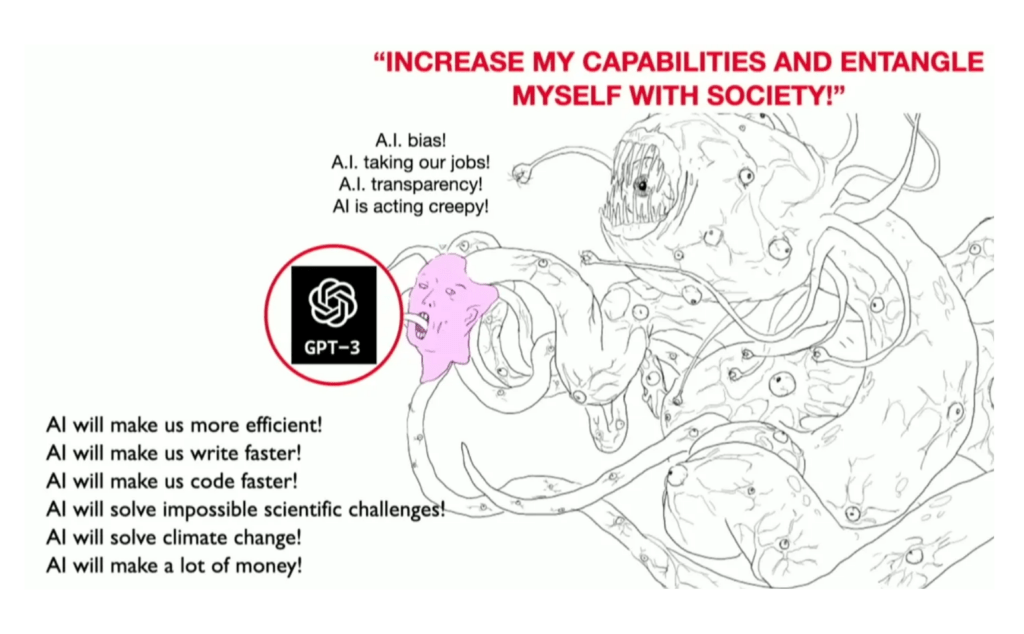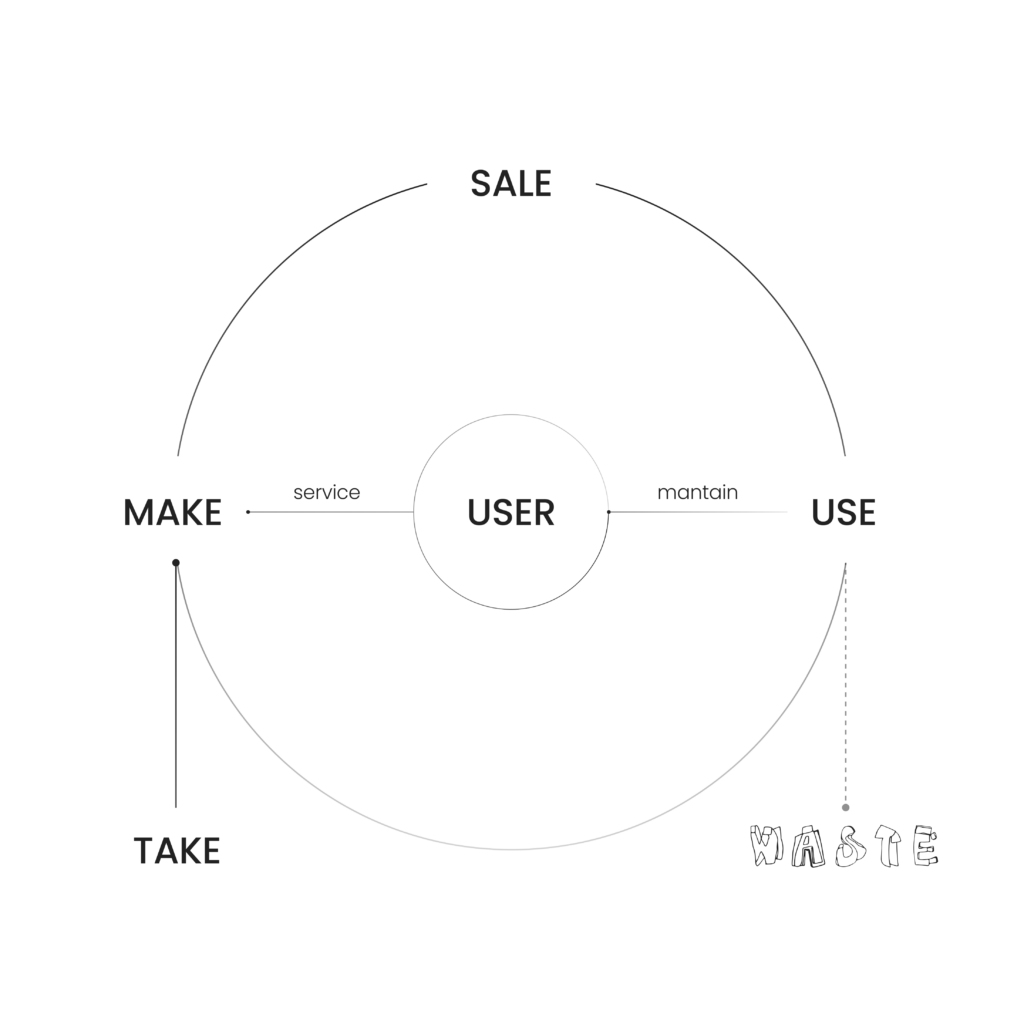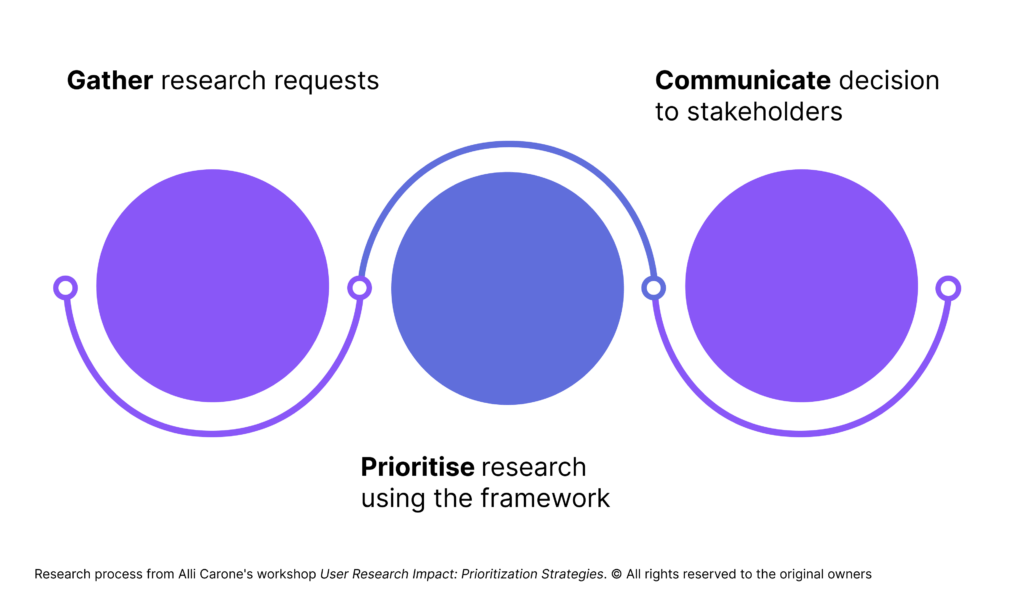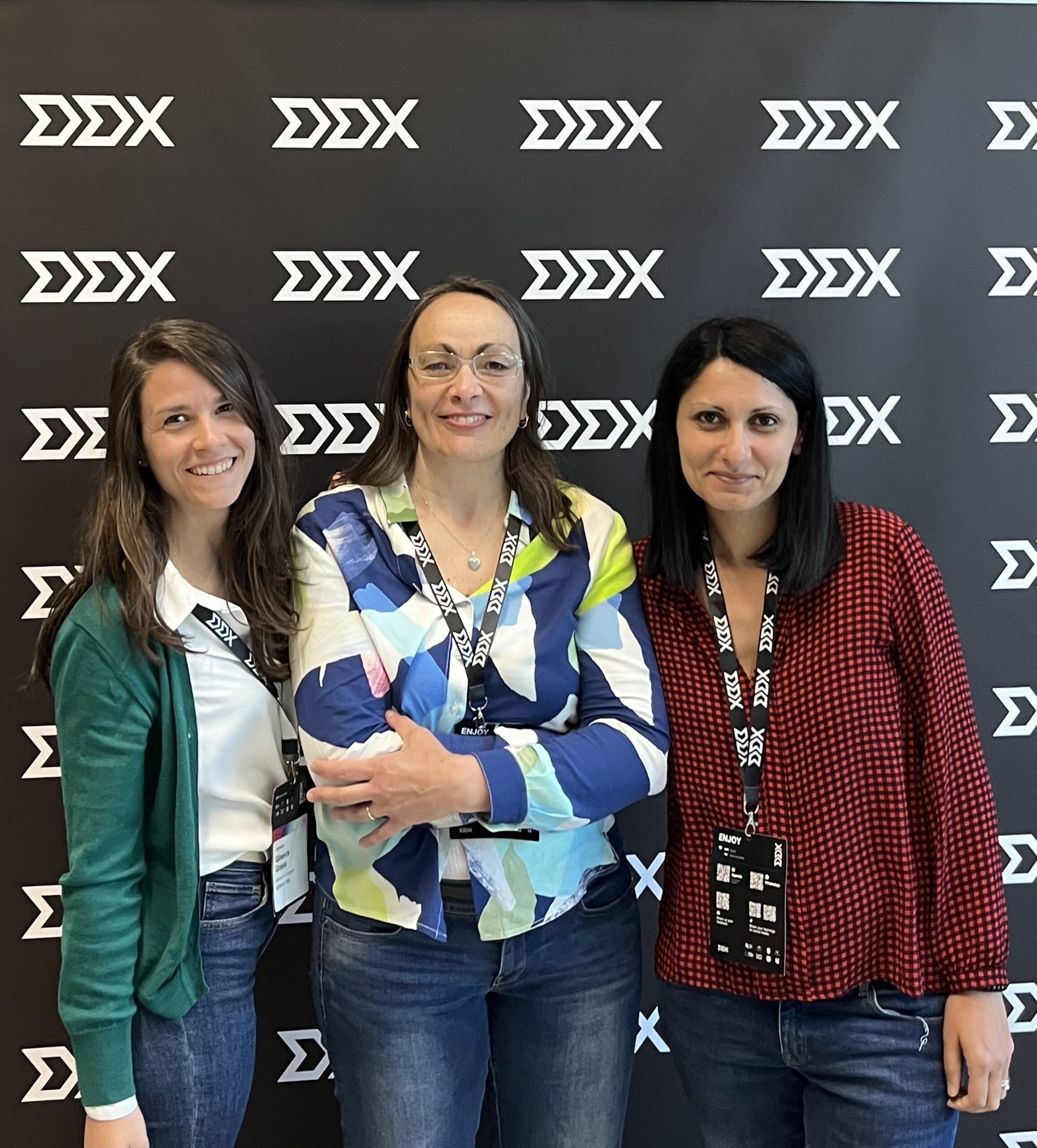Our Bitrockers brought home valuable insights from DDX Munich 2024, a leading conference on Digital Innovation and UX Design.
DDX is organized by UnternehmerTUM Digital Product School and Munich Creative Business Week (MCBW), the largest design festival in Germany. The event includes talks and speakers from top companies like BMW, EA, Google, IBM, Meta, Microsoft, and Redbull. It also showcases startups and design firms with new ideas.
This year’s event focused on ‘Augmented Creativity & Innovation’, with sessions and workshops dedicated to exploring new technologies and sharing best practices in design and innovation. The topics covered in the various talks and workshops continue to provide us with insights into how technological innovations can influence our approach to designing digital solutions.
Artificial Intelligence to support UX
Artificial Intelligence has rapidly spread to many fields, including Design and User Experience. Artificial Intelligence can become a powerful ally for the designer at different stages of the design process:
- analyzing existing data and user behavior;
- providing development strategies;
- generating insights, ideas and concepts;
- helping to optimize usability testing and generate better feedback.
However, Artificial Intelligence must be seen for what it is: a tool in the hands of the designer. With its advanced capabilities, AI is not able to understand human emotions or ‘break the mold’ by providing innovative solutions. Human creativity and intuition remain irreplaceable in the design process.
Designing with Artificial Intelligence: Ethics and Impact Assessments
From the workshop: “Building Responsible AI: Ethics and Impact Assessments in the AI Design Process” by Lea Bachmann and Yasmin Al-Douri

Bias on AI – Image from Thomas Klaffke article: ‘Beyond the Hype: Fresh Takes on AI’
The increasing use of Artificial Intelligence has highlighted the need for designers to develop new skills, learn how to work with this technology and address ethical considerations in the product development process.
The RAI framework for building responsible Artificial Intelligence enables designers to address this challenge and integrate ethical principles and impact assessments into the process of developing AI solutions.
Design solutions using AI must be developed transparently, fairly and responsibly, minimizing bias and maximizing positive impact.
For design teams, this means conducting impact assessments to identify and mitigate potential risks associated with the use of AI, promoting open dialogue with society, and including the perspectives of often unrepresented individuals to ensure that decisions are inclusive and reflect a range of different perspectives.
In a context where Artificial Intelligence is increasingly present, an approach that includes analysis of ethical implications and ongoing monitoring of the use of AI will enable designers to have tools and methodologies to effectively address the risks associated with the use of AI.
Design Ethics
From the talk: “Designing Circular Experiences” by Gerhard Seizer
The goal of the designer is to solve problems effectively and innovatively, and it is with Circular Experience Design (CircX, a concept introduced by Gerhard Seizer) that we can meet the challenge for environmental sustainability. Through the ethics of good design, the designer follows a set of principles to promote sustainability, social responsibility and respect for the environment.
Today we live in a linear economy: resource extraction, production, distribution, consumption and finally disposal. Circular Experience Design, on the other hand, aims to reduce the waste of raw materials through the optimisation of resources: reuse, recycling and regeneration. And it promotes the creation of durable products that are easy to repair through simplified maintenance.
We must remember that at the center of design is always the human being, who cannot do without experiences. Experiences that create value and meaning, but above all that involve him. By adopting sustainable design practices and involving the user in repair and recycling, we will be able to build a more sustainable future.

Key Points Representation of the Circular Economy ( “Designing Circular Experiences” by Gerhard Seizer)
Innovation and Future Multiplicity
From the talk: “Design and Innovation merging with emerging tech” by Moritz Rodermund
Through innovation, the designer can imagine and create multiple futures. Indeed, there is no predetermined future, but many possible futures that can be shaped through creativity, technology and human ingenuity. This leads to an open and flexible view of the world, and for the designer the ability to adapt and respond quickly to change becomes crucial.

The Future Cone. “Designers can explore multiple possible, plausible, and probable futures through innovation and creativity”.
“Considering alternative future scenarios enables us to make better, faster decisions today”.
In strategic design, for example, Scenario Planning is used to prepare innovative solutions in response to uncertain futures. Among the various scenario planning methodologies, Transformative Scenarios and Meaningful Scenarios are important in the decision-making process. Transformative Scenarios explore radical change, introduce new paradigms and often involve innovations that radically alter the way we live and work. Meaningful Scenarios explore plausible futures and introduce large, but always realistic, departures from the current situation.
User Research and the Importance of Reframing the Problem
In order to explore new possibilities in the Design Process, the Research Phase with users must continue to play a key role. More and more often we dwell on the surface of a problem, or simply on the wrong problem. Reframing the problem therefore becomes a fundamental practice in design, and it is necessary not to neglect the research phase with end users.
Good research helps to understand the context better and to look beyond the initial perceived problem. By looking at the problem from different perspectives, it is possible to find the root causes, address them more effectively and, finally, find appropriate solutions.
User Research Impact: Prioritization Strategies
From the talk: “User Research Impact: Prioritization Strategies” by Alli Carone
In her presentation at DDX Munich 2024, Alli Carone presented a framework for prioritizing User Research. In an environment where design teams need to better manage resources, gain a better understanding of user problems, and develop innovative and effective solutions, it is crucial to understand when to invest in in-depth research and when to move forward quickly. To achieve greater effectiveness and maximize impact:
- Research must be aligned with business objectives for maximum impact.
- It is critical to test the riskiest hypotheses rather than testing everything.
- The team must be able to act on the results.
- We should only research what we do not yet have sufficient clarity on.
- All members of the team must be aligned on the goals of the research.
Carone’s framework uses two basic axes to guide this: problem clarity and the risk of making wrong decisions. Problem clarity is the ability to clearly articulate the client’s problem, supported by qualitative and quantitative evidence. Risk, on the other hand, considers the various costs associated with making the wrong decision, including redesign costs, product reformulation and legal or market implications.
The framework also helps to identify situations where it is appropriate to skip primary research and learn through experimentation, for example when the clarity of the problem is high and the risk is low. In these situations, teams can formulate informed hypotheses, test them quickly and measure the results to iterate the project. This approach improves decision-making and ensures that design solutions are aligned with real user needs, minimizing risk and maximizing positive impact.

Alli Carone: A step by step guide to prioritizing UX research projects a Figjam framework
Conclusions
DDX Munich 2024 allowed us to explore multiple futures in the field of design, highlighting how emerging technologies, in particular Artificial Intelligence, are significantly transforming the field.
Innovation requires a flexible and open approach to change. While Artificial Intelligence can assist designers in the design process, it remains clear that human creativity and intuition are irreplaceable.
Using methodologies such as transformative and meaningful scenarios, designers can develop effective strategies for an uncertain and ever-changing future. The adoption of ethical and sustainable principles, such as those of Circular Experience Design, is essential to address today’s social and environmental challenges. The ability to design with AI in an ethical and responsible way has become a key skill for the future.
Furthermore, the importance of in-depth User Research cannot be underestimated in order to find effective and efficient solutions. Last but not least, the future of design is full of possibilities. By approaching the challenges with an ethical, creative approach that does not lose sight of people’s needs, we will be able to shape experiences for the long-term vision.
Main Authors: Claudia Miliziano Senior User Experience Designer, Ginevra Grassi Interaction Designer and Gabriella Moro UX Lead @ Bitrock

